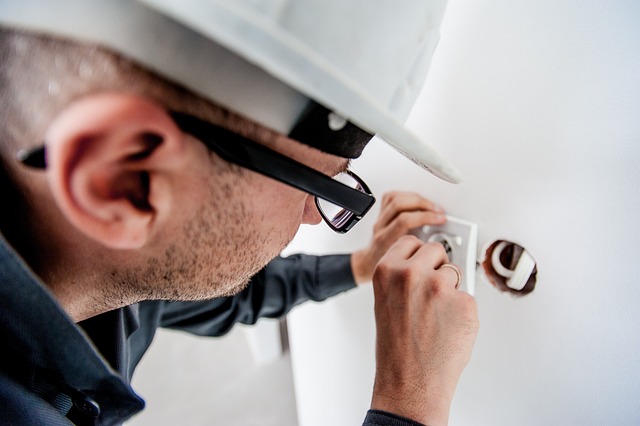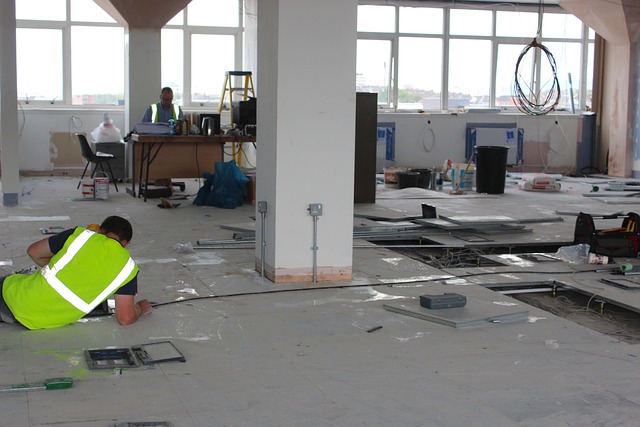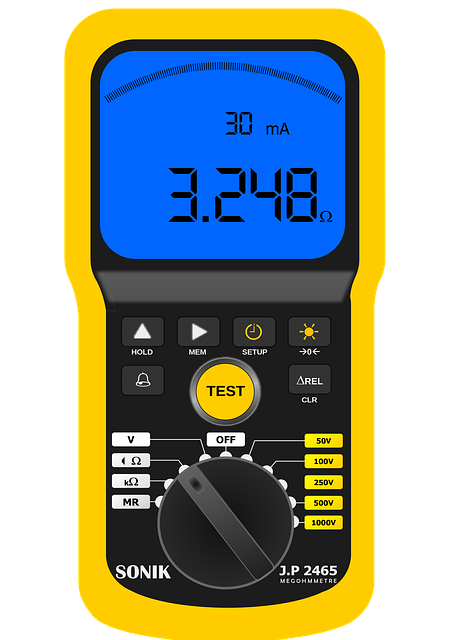Modern circuit breakers offer superior safety, convenience, and maintainability compared to outdated fuses, making them a recommended upgrade for electricians. By replacing old fuses with modern circuit breakers, homeowners can prevent fires, reduce maintenance costs, and enjoy peace of mind. The process involves locating the fuse box, shutting off power, installing the new circuit breaker, testing its functionality, and prioritizing safety throughout.
Looking to upgrade your home’s electrical system? It’s time to consider replacing old fuses with modern circuit breakers. This simple switch can enhance safety, convenience, and efficiency. Our comprehensive guide delves into the understanding of outdated fuses, explores the advantages of contemporary circuit breakers, provides a step-by-step replacement process, and highlights crucial safety precautions for electricians. Discover why this upgrade is a game-changer for any electrician.
- Understanding Old Fuses and Their Limitations
- The Advantages of Modern Circuit Breakers
- Steps to Replace Fuses with Circuit Breakers
- Safety Precautions for Electricians During the Switch
Understanding Old Fuses and Their Limitations

Old fuses, once a standard safety feature in electrical systems, have certain limitations that modern circuit breakers surpass. These traditional fuses protected against overcurrent and short-circuit events by blowing when excessive electricity flowed through them. However, they had several drawbacks. First, they required frequent replacement as they would blow frequently due to even minor power surges, which was a cumbersome task for any electrician. Second, once a fuse blew, it had to be replaced with an exact match, and there was no way to reset or reuse it. This inflexibility made maintenance more complicated, especially in older homes with mismatched or outdated wiring.
In contrast, modern circuit breakers offer enhanced safety features that make them a superior replacement for old fuses. They can detect and interrupt abnormal current flow much faster, preventing potential fires or damage. Additionally, they are designed for easy reset, allowing electricians to quickly restore power after an incident. This not only saves time but also provides homeowners with peace of mind, knowing their circuits are protected by state-of-the-art technology, making the switch a highly recommended upgrade for any property.
The Advantages of Modern Circuit Breakers

Modern circuit breakers offer several advantages over traditional fuses, making them a preferred choice for many electricians. One of the key benefits is their ability to provide enhanced safety features. Circuit breakers are designed to trip and interrupt the electrical flow automatically when they detect an overload or short-circuit, preventing potential fires and electrical hazards. This self-protective mechanism is especially crucial in homes and commercial buildings where faulty wiring or overloaded circuits can pose significant risks.
Another advantage lies in their convenience and ease of maintenance. Unlike fuses that require frequent replacement after they blow, circuit breakers are easily reset by simply flipping a switch. This not only saves time for electricians but also reduces the need for constant fuse replacements, ensuring less downtime and lower maintenance costs. Moreover, modern circuit breakers come with adjustable trip settings, allowing technicians to tailor them to specific circuit loads, further enhancing energy efficiency and safety.
Steps to Replace Fuses with Circuit Breakers

Replacing old fuses with modern circuit breakers is a straightforward process that any qualified electrician can perform. First, locate the fuse box, typically found in a basement or utility room. Next, identify the specific fuse to be replaced. Once located, turn off the power at the main breaker before safely removing the old fuse.
A new circuit breaker is then chosen based on its amperage rating and type (e.g., standard, GFCI). Install the new circuit breaker in the fuse box by inserting it into the designated slot. Ensure proper alignment and secure the breaker with the provided hardware. After installation, turn the power back on at the main breaker and test the new circuit breaker to ensure its functionality.
Safety Precautions for Electricians During the Switch

When an electrician replaces old fuses with modern circuit breakers, safety should be the top priority. Before beginning any work, it’s crucial for electricians to turn off the power supply at the main electrical panel to prevent accidents. They should also wear protective gear, including insulated gloves and safety glasses, to safeguard against potential hazards.
Additionally, electricians need to inspect the wiring and components for signs of damage or wear before making the switch. Any faulty or damaged parts should be replaced immediately to ensure the new circuit breaker functions properly and safely. Maintaining a clear workspace and keeping tools organized can also help reduce the risk of injuries, allowing the electrician to focus on the task at hand with precision and efficiency.
Upgrading from old fuses to modern circuit breakers is a smart move for any electrician. By embracing this change, professionals can harness the benefits of enhanced safety, improved efficiency, and easier maintenance. This simple switch helps ensure that homes and businesses stay protected against electrical overloads, short circuits, and other potential hazards, ultimately leading to a safer and more reliable power distribution system.
